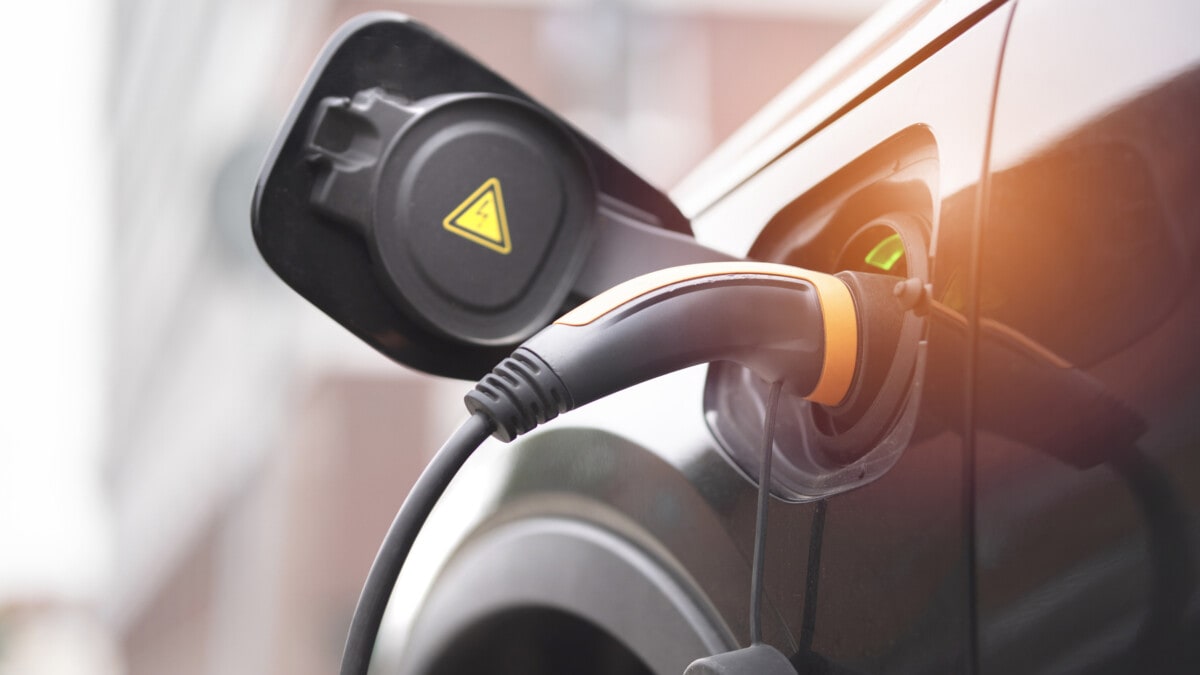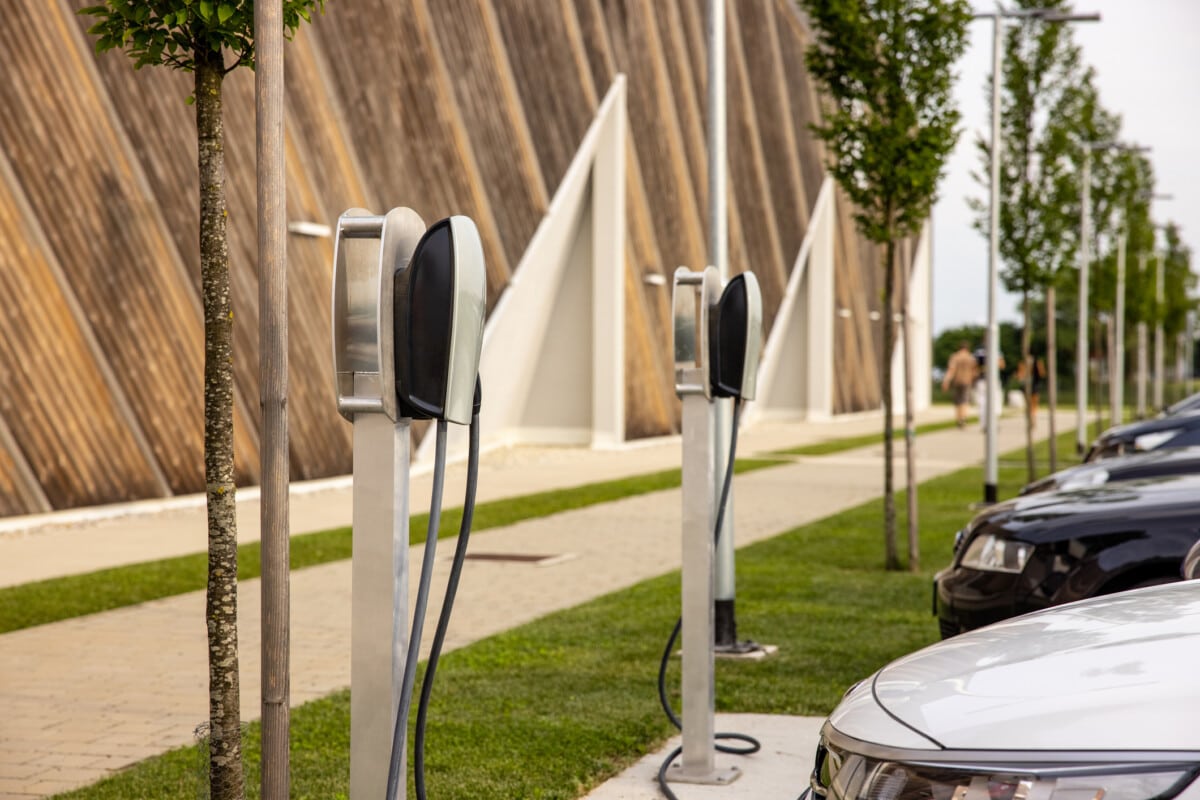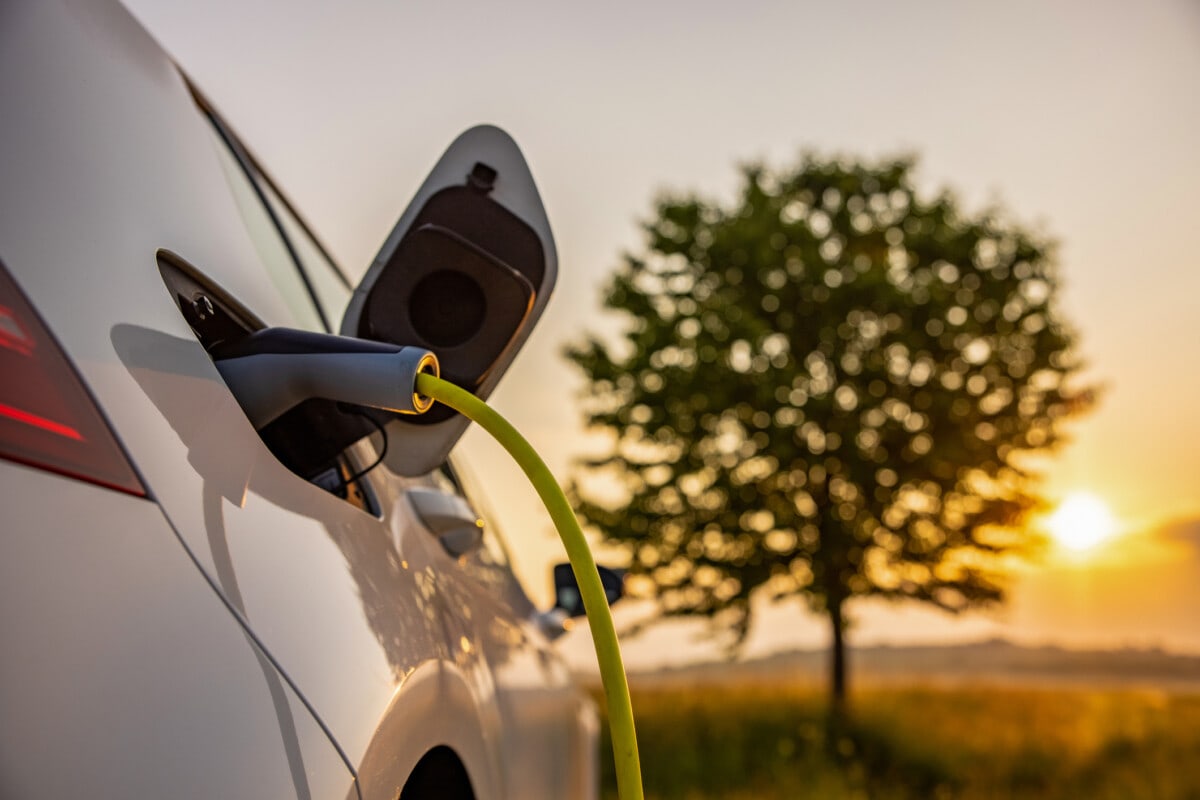Electric vehicles have become increasingly popular in recent years as people have become more aware of the environmental impact of gas-powered cars. With the growth of the electric vehicle market, there has also been an increase in the need for charging infrastructure to support these vehicles. While public charging stations are becoming more common, installing a home EV charger provides numerous benefits, including cheaper and more convenient charging. So, how do you install an EV charging station at home?
In this Redfin article, we’ll explore everything you need to know about EV charger installation, from getting started, to benefits and drawbacks, to cost considerations. We’ve also partnered with Legrand, leaders in the EV charging industry, to provide more in-depth industry knowledge. So, whether you live in an apartment in Wilmington, NC, or a house in Duluth, MN, read on to learn more.

What is an EV charger?
An EV charger, also known as an electric vehicle charger or charging station, is a device that charges the batteries of electric vehicles (EVs). EV chargers supply electricity to a vehicle’s battery and are designed to work with specific types of electric cars and battery configurations.
Installing an EV charger at home is convenient and cost-effective. Not only does it eliminate the need to visit a public charging station, but it also allows for charging anytime without worrying about availability or waiting in line.
Renovating your home?
Find out what your home's worth, edit facts, and see the impact of home projects.
Before you install yourself, strongly consider consulting or hiring a licensed and insured master electrician
Renovating your home?
It’s generally not a good idea to install an EV charger on your own without professional help. As such, you should always consult a professional and hire their services if you are at all unsure.
Ron Rooney, CEO of Peak EV Solutions, shares several reasons why hiring a professional electrician to install your EV charger is a smart decision. “First of all, they have the knowledge and experience to ensure the job is done correctly, safely, and efficiently,” he says. “They will also provide you with advice on the best type of charger to suit your needs and handle any unexpected issues that may arise during the installation, eliminating potential safety risks.”
Professionals can also help you receive all available rebates and incentives.
Peak EV Solutions guides customers to the perfect charger, finds every available saving, and installs the charger quickly and efficiently through their network of Peak Certified Installers.
EV charger installation: how to install an electric car charger
The installation process requires some planning and preparation, but is usually straightforward. Here are the six general steps for installing an EV charger at home:
- Determine the type of charger you need: Before you start the installation process, determine the type of charger you need based on your vehicle’s charging requirements and your budget. You can choose from Level 1, Level 2, or Level 3 chargers, although Level 3 chargers are unsuitable for residential use due to installation costs and electricity requirements. The team at Legrand, leaders in the EV charging industry, have more to say: “Most EV’s come with Level 1 chargers, but Level 2 chargers are much faster (up to four times as many miles of charging per hour) and can be easily installed in the home.”
- Get necessary permits: Depending on your location, you may need to obtain permits before installing an EV charger. Check with your local authorities before starting the installation process.
- Choose a location for the charger: The ideal charger location is close to where you park your vehicle, with easy access to the electrical panel. You should also consider factors such as the length of the charging cable and if you need weather protection.
- Install a dedicated circuit: If you’re installing a Level 2 or Level 3 charger, you need to install a dedicated circuit that can handle the electrical load of the charger. This requires hiring a licensed electrician to install the circuit and any necessary upgrades to your electrical panel.
- Install the charger: Once the dedicated circuit is in place, you can install the charger. The installation process varies depending on the type of charger and the manufacturer’s instructions.
- Test the charger: After the installation is complete, it’s time to test the charger to ensure it’s functioning correctly. You can test the charger by plugging in your electric car and monitoring the charging process. Many charging stations come with apps that help you determine charging rates and electricity costs.
Cord length
It’s important to consider cord length when installing an EV charger at home; it’s much easier and less expensive if you can park your car close to an existing power source. Luckily, new chargers usually come with around 25 feet of cable, which is more than enough for most setups.
The team at Legrand, EV charging industry leaders, add more: “Unlike a Level 1 charger, Level 2 chargers usually have charging cables at least 18-feet in length and more frequently permanently affixed to wall surfaces.”

What types of EV chargers are there?
Several EV chargers are available on the market, differentiated by their charging capabilities and installation methods. Chargers range from Level 1 to Level 3. Level 1 chargers are the slowest and only require a standard outlet, while Level 3 chargers are the fastest and are typically used in commercial settings. Some chargers also include features to help with cord management and installation.
In the US, most electric cars are compatible with Level 1 and 2 chargers. Level 3 chargers, on the other hand, often require a Combined Charging System connector or another type of DC fast charging plug, which may or may not be available to you.
Let’s break these levels down a bit further.
Level 1
Level 1 chargers are the slowest type of EV charger, providing a charging rate of approximately 4-5 miles of range per hour of charging. They use a standard 120-volt household outlet and are typically included when you purchase a new electric vehicle. Level 1 chargers are best suited for overnight trickle charging at home, as they can take up to 24 hours to fully charge an empty battery.
Level 2
Level 2 chargers provide a faster charging rate than Level 1 chargers, typically providing 10-20 miles of range per hour of charging. They require a dedicated 240-volt circuit and may require installation by a licensed electrician depending on your area and home’s capabilities. Level 2 chargers are commonly found in public charging stations and are also suitable for home use, as they can fully charge an EV battery in 4-8 hours.
Level 3
Level 3 chargers, also known as DC Fast Chargers or rapid chargers, are the fastest type of EV charger and can provide a full charge in as little as 20-30 minutes. They require a specialized charging connector (called a fast charging plug) and typically use a higher voltage and amperage than Level 1 and Level 2 chargers. Level 3 chargers are commonly found in commercial or public charging stations and are unrealistic for personal use.

How much does an electric car charger cost?
Most EV chargers cost between $300 and $1,500, depending on the type of charger and installation requirements. Level 1 chargers are usually included with a new electric vehicle, and a replacement will cost around $300. Level 2 chargers cost between $400 to $1,500, although that price may rise depending on your electrical situation. Level 3 chargers are unsuitable for personal use and can cost up to $50,000.
“For a plug-in EV charger, the initial investment is minimal,” adds Legrand. “All you need is the right outlet for your needs, making this type of charger the easiest to invest in to start charging at home. Level 2 chargers require a NEMA 14-50 outlet, which is the same outlet commonly found in electric dryers, ranges, recreation vehicles, and more. If your home isn’t equipped with this type of outlet, you can buy one for around $10 and have it installed by a certified electrician in a snap.”
In addition to the charger’s cost, there may be additional costs associated with installation, permits, and electrical upgrades, particularly for Level 2. Installation costs can vary widely depending on factors such as the location of the charger, the electrical infrastructure of the building, and the need for additional equipment or permits. If you have questions, call your local electric company or government hotline.
Other cost considerations
Many government tax credits, grants, and rebates are available throughout the US to help offset the cost of EV chargers and installation. These incentives vary by location and range from monthly payments to subsidized purchases. “Level 2 chargers often qualify for more utility rebates, so we recommend them in most cases,” says Legrand.
Some states and cities may have higher electric vehicle registration fees to offset the lack of gasoline taxes, which many governments use for road maintenance. Do your research before investing in electric vehicles to see if the cost is right for you.
“Another major benefit is that it’s usually cheaper to charge EVs (by hundreds of thousands of dollars) than it is to fill a gas-powered vehicle with fuel,” continues Legrand. “The difference between the two amounts depends on location, but charging an EV is cheaper in most parts of the United States.”
It’s also important to consider the higher electric bills that come with charging an electric vehicle. Luckily, most EV chargers have companion apps to help you track data such as electricity usage, estimated cost, charging time, and more.
How long does it take to charge an electric car?
Charging times vary depending on your charging station (Level 1, 2, or 3), your home’s electrical capabilities, and your car’s model. In general, Level 1 chargers provide a full charge in 12-24 hours, Level 2 chargers provide a full charge in 4-8 hours, and Level 3 chargers fill an empty battery in around 30 minutes.
Additionally, some electric cars have larger onboard chargers that can accept higher charging rates, reducing the charging time. Charging times can also vary depending on the battery’s condition, the weather, temperature, and more.

How to incorporate an EV charger into your home design
With various designs and styles available on the market, it’s simple to choose an EV charger that complements your home’s design.
One option is to choose a modern charger with a minimalist design that blends seamlessly into your home’s exterior. This style of charger often features clean lines and a simple color scheme, and is available in all three charging levels.
Additionally, you can consider the charger’s location when incorporating it into your new home’s aesthetic, especially if you’re building a new custom home. For example, if you have a driveway, pick a charger you can mount on a concealed post or wall, allowing it to blend seamlessly into your design.
Looking to save money on your mortgage?
Final thoughts on EV charger installation
As electric vehicles become more popular and affordable, accessible and reliable charging infrastructure is becoming more critical. Installing EV chargers in homes, workplaces, and public areas not only benefits EV owners but also helps reduce greenhouse gas emissions and improve air quality. With advancements in technology and increased government support, installing EV chargers has become easier and more affordable than ever before.
If you want to reduce your carbon footprint at home and help the environment, EV chargers can be an excellent choice for you.

























 United States
United States Canada
Canada